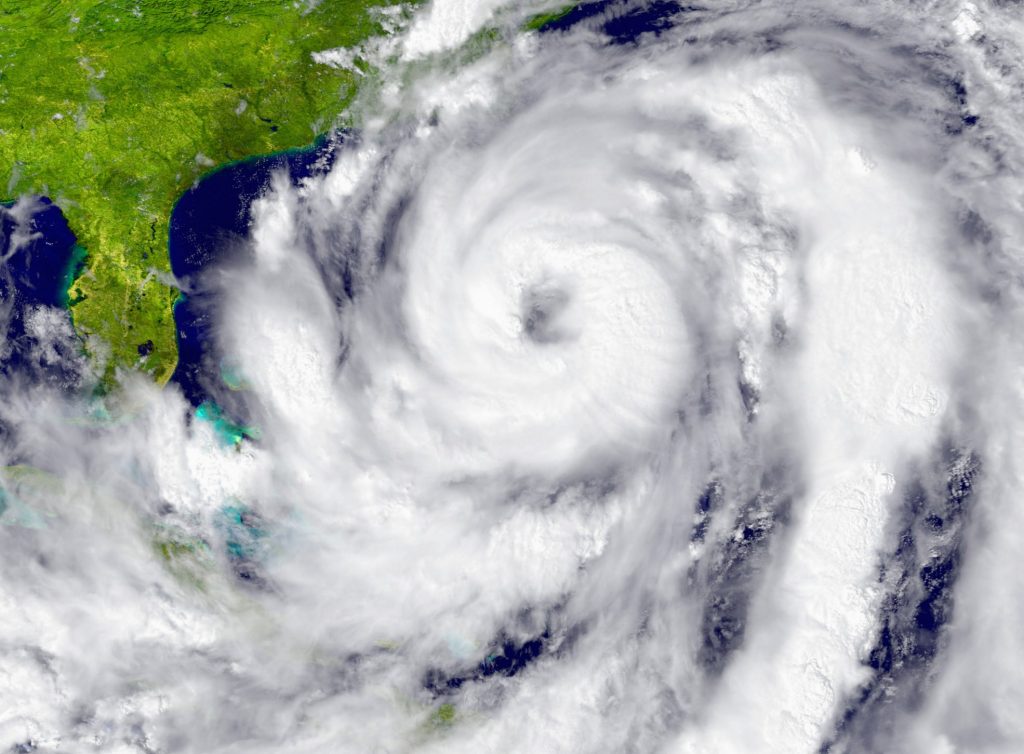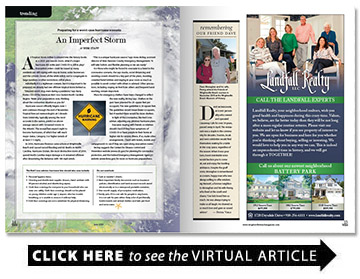An Imperfect Storm
Preparing for a worst-case hurricane scenario
BY WBM Staff

As Tropical Storm Arthur is entered into the history books as a 2020 pre-season storm, what if a major hurricane did strike and COVID-19 is still in play? Evacuation orders could be issued as many residents are still coping with stay-at-home, some businesses and the schools closed, all the while edicts not to congregate in large numbers or other restrictions still in place.
Admittedly it is a nightmare scenario, but it is important to be prepared, we already had one offshore tropical storm behind us.
“Disasters won’t stop, even during a pandemic,” says Barry Porter, CEO of the American Red Cross Eastern North Carolina Region. “Make your preparations now, thinking about the coronavirus situation as you do.”
Hurricane season officially begins June 1 and continues through the end of November. Tropical forecast meteorologists at Colorado State University, typically among the most accurate in the nation, predict an above average season with 16 named storms in the Atlantic. The researchers expect eight to become hurricanes, of which four will reach major status, Category 3 or higher (winds of at least 111 mph).
In 2018, Hurricane Florence came ashore at Wrightsville Beach and caused record flooding and 42 deaths in North Carolina. Hurricane Dorian, the most destructive storm of 2019, spared North Carolina major damage as it remained offshore after devastating the Bahamas with 180 mph winds.
“This is a unique hurricane season,” says Anna McRay, assistant director of New Hanover County Emergency Management. “It will take holistic and flexible planning so we are ready.”
For those who might be forced to evacuate to a hotel in the coronavirus scenario, she says masks, social distancing and avoiding crowds should be a key part of the plans. Avoiding crowded hotel lobbies and staying in your room as much as possible to avoid contact with others is advised. Other precautions, including staying six feet from others and frequent handwashing, remain important.
Plans for emergency shelters have been changed to reflect the new reality, McRay says. Shelters in the past have planned for 20 square feet per occupant. The new guideline is 36 square feet. The guidelines would mean fewer occupants, but if needed there would be more shelters.
In light of the coronavirus, the Red Cross advises adjusting any previous hurricane plans.
Evacuees staying with friends or relatives should check if they have symptoms of COVID-19 or have people in their home at higher risk for serious illness. If so, make other arrangements. Check with hotels, motels and campgrounds to see if they are open along evacuation routes.
McRay suggests the Centers for Disease Control and Prevention website (www.cdc.gov) for planning for coronavirus protection, and the Federal Emergency Management Agency’s website (www.fema.gov) for more on hurricane preparedness.
The Red Cross advises hurricane kits should also now include:
• Personal hygiene items.
• Cleaning and disinfectant supplies (tissues, hand sanitizer with 60 percent alcohol, and disinfecting wipes).
• Cloth face coverings for everyone in your household who can wear one safely. Cloth face coverings should not be placed on young children under age 2, anyone who has trouble breathing, or is unable to remove it without help.
• Cloth face coverings are not a substitute for physical distancing.
Do not overlook:
• Cash or traveler’s checks.
• Have important family documents such as insurance policies, identification and bank account records saved electronically or in a waterproof, portable container.
• One-month supply of prescription medication.
• Family pets. If it is not safe for people to stay home, it is not safe for pets either. Keep a list of pet-friendly hotels/motels and animal shelters and take pet food and extra water.
